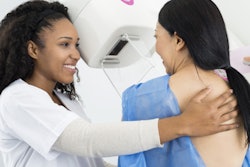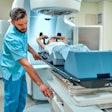Radiology practices can create a more welcoming environment for radiologists returning from parental leave who breastfeed, according to a paper published November 26 in Current Problems in Diagnostic Radiology.
Researchers led by Courtney Tomblinson, MD, from Vanderbilt University Medical Center in Nashville, TN, outlined current challenges for breastfeeding radiologists and how departments can develop and implement strategic lactation plans to create more accessibility for trainees and faculty.
“This plan takes into consideration the financial and workforce barriers, while recognizing the impact on wellbeing, recruitment, and retention,” Tomblinson and colleagues wrote.
Parents of young people are at risk of burnout and re-entering the medical workforce after parental leave can be challenging. Previous reports suggest that radiologists cite time, space, and support as barriers to breastfeeding. More reports suggest that providing lactation facilities in the workplace lessens the risk of absenteeism.
Under the Affordable Care Act, the amended Fair Labor Standards Act (FLSA) established that employers with at least 50 employees provide reasonable break time for milk expression within the first year after the child's birth and a private, secure place to pump. However, only 13% of U.S. radiology practices report having dedicated lactation facilities for their employees, according to a 2017 report by the American College of Radiology.
Tomblinson and co-authors offered strategies to support radiologist mothers as they return to work.
They called for dedicated lactation spaces to be clean, comfortable, and convenient. This includes having a lock for the door, a refrigerator for milk storage, comfortable furniture, and dimmable lighting options. The FSLA provision notes that dedicated spaces cannot be a bathroom.
“Many of our reading spaces away from main campus offer lactation rooms within the radiology space or solitary offices which can be locked for a private space,” the researchers wrote. “Other training programs have implemented initiatives to purchase portable pumps with minimal noise that can be utilized in the reading room if the user wishes, diminishing time away from clinical and educational opportunities.”
The team also called for departments to create explicit written policies to align expectations for both employees and employers, which it wrote could especially help trainees who may be uncomfortable about choosing between work and taking time to breastfeed. The team added that these policies should be publicly available and easy to locate.
As for productivity, departments can implement lactation credit models to provide time for pumping while still generating work relative value units (wRVUs). They can also provide a PACS workstation in breastfeeding rooms so radiologists can interpret images while breastfeeding.
Finally, the researchers suggested that departments can provide individual lactation resources such as breastfeeding supplies and build a comprehensive support network like physician support network groups.
The full paper can be found here.



















